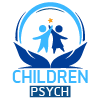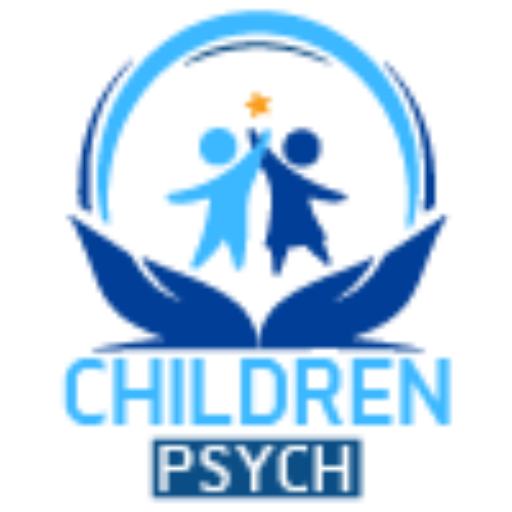
Here’s an overview:
- Introduction to Neurofeedback Therapy
- Understanding How Neurofeedback Therapy Works
- The Science Behind Neurofeedback
- Common Conditions Treated with Neurofeedback
- Benefits of Neurofeedback Therapy
- Neurofeedback Therapy in Orange County: An Overview
- Choosing the Right Neurofeedback Therapist in Orange County
- Case Studies: Success Stories from Orange County Residents
- Potential Risks and Considerations
- Future Trends in Neurofeedback Therapy
- Conclusion: Is Neurofeedback Therapy Right for You?
Introduction to Neurofeedback Therapy
Neurofeedback therapy, also known as EEG biofeedback, is a therapeutic intervention that allows you to gain control over your brainwave patterns. This non-invasive treatment uses real-time monitoring of brain activity to help you develop self-regulation skills and achieve optimal brain function.
How Neurofeedback Works
Neurofeedback therapy involves a few key steps to help you understand and improve your brain’s performance:
- Assessment: Initially, you’ll undergo a brain mapping session using quantitative electroencephalography (qEEG). Sensors are placed on your scalp to measure electrical activity in different regions of your brain.
- Analysis: The recorded data is analyzed to identify any irregular brainwave patterns. These patterns may be linked to various conditions like anxiety, depression, ADHD, or sleep disorders.
- Training: You participate in training sessions where you’re given visual or auditory feedback based on your brainwave activity. For example, if your brainwaves indicate a calm state, you might see a picture become clearer or hear a pleasant sound.
- Reinforcement: By consistently receiving this feedback, your brain learns to produce more of the desired brainwave patterns and fewer of the undesired ones.
Benefits of Neurofeedback Therapy
Neurofeedback offers a range of benefits, particularly if you’re seeking alternative or complementary treatments for mental health issues:
- Improved Focus and Attention: Especially beneficial for those with ADHD, helping to enhance concentration and reduce impulsivity.
- Reduced Anxiety and Depression: Alters brainwave patterns associated with these conditions, promoting a more balanced emotional state.
- Enhanced Sleep Quality: Helps normalize brainwave patterns that interfere with sleep, leading to better rest and overall health.
- Peak Performance: Athletes, musicians, and professionals use neurofeedback to achieve better focus, stress resilience, and cognitive performance.
Suitability and Safety
Neurofeedback is suitable for people of all ages, from children to older adults. It is a safe, non-invasive procedure with minimal side effects. The most common consideration is the time commitment, as multiple sessions are often required for lasting results.
Accessibility in Orange County
In Orange County, several qualified practitioners offer neurofeedback therapy. Finding the right provider involves verifying their credentials, experience, and client testimonials. Many clinics specialize in specific areas, such as pediatric services or peak performance training, so you can select one that best meets your needs.
Understanding How Neurofeedback Therapy Works
You may wonder how neurofeedback therapy can benefit you in addressing various mental health issues. Neurofeedback, also known as EEG biofeedback, is a non-invasive therapy that involves training your brain to function more efficiently. Here’s how it works:
-
Assessment and Setup:
- You begin with an initial assessment where a clinician records your brainwave activity using an electroencephalogram (EEG) cap.
- This assessment helps identify any irregular brainwave patterns that may contribute to your symptoms.
-
The Training Session:
- During a typical session, you sit comfortably while watching a computer screen displaying visuals such as videos, games, or graphs.
- The EEG cap continues to monitor your brainwaves, sending real-time data to the computer.
-
Feedback Loop:
- The displayed visuals respond to your brainwave activity. For example, the video might play smoothly when your brainwaves show optimal patterns and pause or distort when irregular patterns appear.
- This immediate feedback helps your brain recognize and correct its own activity.
-
Learning and Adaptation:
- Over multiple sessions, your brain starts to learn and adopt healthier patterns, reinforcing positive brainwave activity and reducing the irregularities that cause symptoms.
- This process is akin to exercising your brain, training it to function better.
-
Duration and Frequency:
- Sessions usually last about 30 to 60 minutes and are typically scheduled one to three times per week.
- The total number of sessions varies depending on individual needs, but many people start to see improvements after 10 to 20 sessions.
What Conditions Can It Address?
Neurofeedback has shown promise in treating several conditions:
- Anxiety and Depression: Helps regulate emotional responses.
- ADHD: Improves attention span and reduces hyperactivity.
- PTSD: Alleviates symptoms by promoting brain stability.
- Insomnia: Enhances sleep patterns.
What to Expect
You might experience benefits such as:
- Improved focus and concentration.
- Reduced anxiety and stress.
- Better sleep quality.
Given these points, understanding how neurofeedback therapy works can be a critical step towards making an informed decision about pursuing this therapeutic approach in Orange County.
The Science Behind Neurofeedback
At its core, neurofeedback therapy involves monitoring and adjusting brainwave patterns in real-time to improve brain function. This non-invasive treatment harnesses the power of neuroplasticity—the brain’s ability to reorganize itself by forming new neural connections. Here’s how it works step-by-step:
-
Brainwave Monitoring:
- Specialized sensors are placed on your scalp to measure electrical activity in different regions of your brain.
- Electroencephalography (EEG) technology captures these brainwaves and displays them on a computer screen.
-
Real-Time Feedback:
- The EEG feedback is analyzed to determine which brainwaves are underactive or overactive.
- You’ll receive real-time auditory or visual feedback based on this data, helping you recognize and adjust your brainwave patterns.
-
Training Sessions:
- Neurofeedback typically involves multiple training sessions, where you engage with a computer interface based on your brain’s activity.
- Through repeated practice, your brain learns to self-regulate problematic patterns, enhancing overall functionality.
Brainwave Types and Their Functions
Understanding the different types of brainwaves is crucial for grasping how neurofeedback works:
- Delta Waves (0.5-4 Hz): Dominant during deep sleep, vital for healing and restorative functions.
- Theta Waves (4-8 Hz): Associated with light sleep, relaxation, and creativity.
- Alpha Waves (8-13 Hz): Present during quiet, restful states and meditative moments.
- Beta Waves (13-30 Hz): Found in active thinking, problem-solving, and focus.
- Gamma Waves (>30 Hz): Linked to high-level information processing and cognitive functioning.
Neuroplasticity and Neurofeedback
Neuroplasticity plays a significant role in neurofeedback therapy. Initially, your brain might struggle to adjust, but with consistent feedback and training, it becomes more adept at forming new, beneficial neural pathways.
- Repetition: You’ll notice that repetition in neurofeedback sessions strengthens and solidifies new neural connections.
- Adaptability: Your brain’s adaptability is harnessed to shift from maladaptive patterns to more functional and balanced states.
Applications of Neurofeedback
Neurofeedback is employed in diverse applications to create measurable improvements:
- Mental Health:
- Address issues like anxiety, depression, and PTSD by normalizing brainwave activity.
- Cognitive Enhancement:
- Improve attention, memory, and executive functions.
- Physical Health:
- Assist in conditions like chronic pain, migraines, and sleep disorders by stabilizing neurophysiological functioning.
Understanding these scientific principles will give you a better grasp of how neurofeedback therapy can be a powerful tool for improving mental and physical well-being.
Common Conditions Treated with Neurofeedback
Neurofeedback therapy can be highly beneficial for various conditions affecting mental and emotional well-being. If you reside in Orange County, you might find neurofeedback a viable treatment option. The following are common conditions often treated with neurofeedback:
ADHD
ADHD (Attention Deficit Hyperactivity Disorder) symptoms like inattention, impulsivity, and hyperactivity can be mitigated through neurofeedback. It helps in improving focus, controlling impulses, and enhancing overall cognitive function.
Anxiety and Stress
Neurofeedback can be effective in reducing anxiety and stress levels. By training your brain to regulate itself better, you can achieve a state of calm and balanced emotional responses, making daily life more manageable.
Depression
Neurofeedback targets brain areas involved in mood regulation. It aims to correct patterns associated with depression, providing you with more stability and an improved sense of well-being.
PTSD
For those suffering from PTSD (Post-Traumatic Stress Disorder), neurofeedback can help in managing symptoms like flashbacks, nightmares, and hypervigilance. It aids in bringing your nervous system back to a more balanced state.
Insomnia
Struggling with sleep disorders like insomnia can severely affect your quality of life. Neurofeedback can teach your brain to achieve the relaxation needed for restful sleep, positively impacting your overall health.
Migraines
Frequent migraines and headaches can be debilitating. Neurofeedback helps in identifying and correcting irregular brainwave patterns that may trigger these episodes, leading to improvement in their frequency and intensity.
Autism Spectrum Disorder (ASD)
Children and adults on the autism spectrum can benefit from neurofeedback. It may assist in improving communication, social skills, and reducing behavioral issues.
Traumatic Brain Injury (TBI)
Neurofeedback can aid in the recovery from TBI by helping to rewire the brain for improved cognitive function and emotional balance.
Learning Disorders
Conditions like dyslexia and other learning disorders can be treated with neurofeedback. It helps improve concentration, memory, and other cognitive abilities essential for learning.
In Orange County, neurofeedback therapy provides an accessible, non-invasive way to address a wide range of mental health and neurological conditions, helping you lead a better quality of life.
Benefits of Neurofeedback Therapy
Neurofeedback therapy offers numerous advantages that can significantly enhance your well-being and cognitive functioning. Here are some key benefits you might experience:
-
Improved Emotional Regulation
Neurofeedback helps you gain better control over your emotions, reduce stress, and manage anxiety effectively. By training your brain to function more optimally, you can achieve a calmer and more balanced emotional state. -
Enhanced Focus and Attention
You may find that your concentration and attention span improve with neurofeedback therapy. This is particularly beneficial for individuals with ADHD or attention issues, enabling better performance in school, work, and daily activities. -
Better Sleep Quality
The therapy can help regulate the brainwaves associated with sleep. Improved sleep patterns contribute to overall health and can alleviate issues such as insomnia and restless sleep. -
Reduction in Headache and Migraine Frequency
If you suffer from chronic headaches or migraines, neurofeedback may offer relief. Training your brain to manage pain responses better can decrease the frequency and intensity of your headaches. -
Alleviation of Cognitive Decline
For older adults or those experiencing cognitive issues, neurofeedback can help maintain or even improve cognitive function. This includes better memory, sharper thinking, and a more responsive brain. -
Management of PTSD Symptoms
If you have PTSD, neurofeedback can help in reducing symptoms like flashbacks, anxiety, and hypervigilance. It offers a non-invasive method to regain control and improve mental well-being. -
Lowered Anxiety Levels
You might notice a significant reduction in anxiety symptoms. Neurofeedback can help retrain your brain to respond more calmly to stressors, fostering a more relaxed state of mind. -
Support for Depression
Neurofeedback therapy has been shown to benefit individuals battling depression by helping to balance mood and promote positive mental states. -
Enhanced Learning Abilities
Students or individuals engaged in continuous learning can benefit from improved memory and learning capacities, making it easier to absorb and retain new information. -
Personalized Treatment Plans
One of the significant benefits is the tailored approach. Neurofeedback therapy can be customized to meet your specific needs, ensuring the best possible outcomes for your unique situation.Neurofeedback Therapy in Orange County: An Overview
Neurofeedback therapy is gaining traction in Orange County, offering residents an innovative approach to improving mental health and cognitive performance. This therapy addresses various conditions by training your brain to enhance its regulatory functions.
What is Neurofeedback Therapy?
Neurofeedback therapy, also known as EEG biofeedback, involves using real-time monitoring of brain activity to teach self-regulation of brain function. During a session, sensors are placed on your scalp to measure brain waves. This data is then fed back to you through visual or auditory means, enabling you to learn how to modulate brain wave patterns.
Benefits of Neurofeedback Therapy
Neurofeedback offers numerous benefits, including:
- Reduced Symptoms of ADHD: Many find significant reductions in impulsivity and hyperactivity.
- Improved Anxiety Management: Learn techniques to calm your mind and manage anxiety.
- Enhanced Cognitive Performance: Boost your focus, memory, and overall cognitive function.
- Better Sleep: Helps in regulating sleep patterns for improved rest.
- Emotional Regulation: Facilitates better control over emotional responses.
Conditions Treated
You can find relief from various conditions through neurofeedback, including but not limited to:
- ADHD
- Anxiety Disorders
- Depression
- PTSD
- Migraines
- Insomnia
- Learning Disabilities
What to Expect
During a typical neurofeedback session in Orange County:
- Initial Assessment: Your therapist will conduct an EEG assessment.
- Session Setup: Sensors are placed on your scalp.
- Training Phase: You’ll engage in activities that provide real-time feedback on your brain activity.
- Progress Monitoring: Each session builds upon the previous, and progress is regularly assessed.
Choosing a Provider in Orange County
When selecting a neurofeedback therapist, consider the following:
- Credentials: Ensure they are certified in neurofeedback.
- Experience: Look for providers with a strong track record.
- Client Reviews: Check for positive feedback from previous clients.
- Consultation: Many providers offer an initial consultation.
Accessibility and Cost
Neurofeedback therapy is increasingly accessible in Orange County. Sessions typically range from \(100 to \)250 each. Some insurance plans may cover it, so check with your provider.
With the wealth of benefits and growing availability, neurofeedback therapy is a promising option for Orange County residents looking to improve their mental health and cognitive functioning.
Choosing the Right Neurofeedback Therapist in Orange County
When considering neurofeedback therapy, selecting the right therapist is crucial to achieving the best results. Here are some essential steps to guide your decision-making:
-
Research Qualifications
- Verify that the therapist is certified by a reputable organization, such as the Biofeedback Certification International Alliance (BCIA).
- Check their educational background and ensure they have advanced training specific to neurofeedback.
-
Experience Matters
- Look for therapists with extensive experience in administering neurofeedback.
- Seek out professionals who have worked with a diverse range of conditions and age groups.
-
Check for Specializations
- Identify if the therapist specializes in treating your particular condition, be it ADHD, anxiety, or sleep disorders.
- Specialized therapists often stay updated with the latest advancements in their focus area.
-
Client Testimonials and Referrals
- Read client reviews and testimonials to gauge the therapist’s effectiveness and approach.
- Ask for referrals from healthcare providers or friends who have undergone neurofeedback therapy.
-
Initial Consultation
- Schedule an initial consultation to discuss your goals and the methodologies used by the therapist.
- This meeting allows you to evaluate their communication style and comfort level.
-
Technology and Protocols
- Inquire about the technology and equipment used in the therapy. Modern and well-maintained tools can enhance treatment effectiveness.
- Ask about the specific protocols they employ and how they tailor them to individual needs.
-
Cost and Insurance
- Discuss the cost per session and the overall treatment plan.
- Check if the therapist accepts your insurance or offers any payment plans to make therapy more affordable.
-
Location and Accessibility
- Ensure the therapist’s office is conveniently located within Orange County.
- Consider the office hours and availability to fit your schedule.
Making an informed decision can significantly impact your neurofeedback therapy’s success. Taking the time to choose the right therapist ensures that your experience is beneficial and aligns with your therapeutic goals.
Case Studies: Success Stories from Orange County Residents
Explore inspiring stories of individuals from Orange County who have harnessed the power of neurofeedback therapy.
-
Michael’s Journey with Anxiety
- Challenges: Michael struggled with severe anxiety, affecting his job performance and social life.
- Treatment: Neurofeedback sessions twice per week.
- Results: After three months, Michael reported a significant decrease in anxiety levels and improved focus at work. Social interactions became more comfortable.
-
Sophia’s Battle with ADHD
- Challenges: Sophia, a high school student, faced continuous challenges due to her ADHD, including poor concentration and impulsivity.
- Treatment: Customized neurofeedback protocols.
- Results: Her grades improved, impulse control increased, and she felt more in tune with her surroundings. Teachers noted enhanced classroom engagement.
-
David’s Victory Over Insomnia
- Challenges: Chronic insomnia plagued David, leading to fatigue and poor mental health.
- Treatment: Weekly neurofeedback therapy sessions.
- Results: Within two months, David experienced regular, restful sleep. His daytime energy levels soared, and his overall well-being improved.
-
Lisa’s Recovery from Trauma
- Challenges: Lisa faced post-traumatic stress disorder (PTSD) symptoms after a significant life event.
- Treatment: Focused neurofeedback therapy aimed at reducing stress response.
- Results: Lisa noticed a reduction in flashbacks and anxiety. Her ability to manage stress enhanced, bringing back a sense of normalcy.
-
Ethan’s Enhancement of Peak Performance
- Challenges: Ethan, an athlete, sought to improve his performance and mental resilience.
- Treatment: Peak performance neurofeedback training.
- Results: Ethan’s mental clarity and focus during competitions increased. His recovery times improved, and he achieved better athletic outcomes.
Each individual’s experience offers a unique glimpse into how neurofeedback therapy can address a diverse range of issues. By providing tailored solutions, Orange County residents have found pathways to enhanced mental health and well-being.
Potential Risks and Considerations
When considering neurofeedback therapy, it’s crucial to be aware of potential risks and considerations.
-
Effectiveness Variability: Not all individuals respond the same way to neurofeedback. While many report positive outcomes, some may not experience significant benefits. You should maintain realistic expectations and understand that results can vary.
-
Side Effects: Although rare, some people might experience side effects such as headaches, fatigue, irritability, or increased anxiety following sessions. Monitoring your reaction after each session and communicating with your therapist can help manage these issues.
-
Financial Cost: Neurofeedback therapy can be expensive, and insurance coverage often varies. You may need to budget for multiple sessions, and it’s essential to discuss costs and payment options with your provider upfront.
-
Therapist Credentials: Ensure the therapist is properly certified and experienced in neurofeedback. An unqualified practitioner could lead to ineffective or even harmful results. Look for professionals with credentials from reputable organizations.
-
Long-Term Commitment: Neurofeedback therapy typically requires multiple sessions over a period of time to see significant improvements. You should be prepared for a long-term commitment, which might include regular follow-ups and maintenance sessions.
-
Technology Quality: The effectiveness of neurofeedback therapy can depend on the quality of the technology used. Ensure that the equipment and software are up-to-date and well-maintained for accurate readings and effective therapy.
-
Alternative Treatments: Consider the availability and suitability of other treatments. Neurofeedback therapy is one of many options, and it may need to be complemented with medication, counseling, or lifestyle changes.
-
Child and Adolescent Use: If seeking neurofeedback therapy for a child or adolescent, be aware that their developing brains may respond differently. Special considerations and modifications might be necessary to ensure safety and effectiveness.
“Informed decisions require thorough understanding. Evaluate all aspects carefully to know if neurofeedback therapy suits your needs.”
By understanding the potential risks and considerations, you can make more informed choices about whether neurofeedback therapy is right for you.
Future Trends in Neurofeedback Therapy
As a resident of Orange County, you’re likely to witness several exciting trends in neurofeedback therapy. These advancements promise to enhance treatment efficacy and accessibility.
Personalized Neurofeedback
You can expect a shift towards more personalized neurofeedback treatments. Tailored protocols based on individual brain patterns will become widely available. Customized treatment plans facilitate quicker and more sustainable results, addressing your unique neurological challenges.
AI and Machine Learning Integration
Artificial intelligence (AI) and machine learning are on the horizon. These technologies can analyze brainwave data in real time, providing immediate feedback and adaptive training programs. For you, this means a more efficient and targeted approach to brain training.
Home-Based Neurofeedback Systems
Emerging home-based neurofeedback systems will make therapy more convenient. Portable devices will allow you to continue your brain training from the comfort of your home. This flexibility can lead to greater adherence and more consistent progress.
Wearable Technology
The integration of wearable technology is another trend to look out for. Wearable neurofeedback devices will monitor your brainwave activity throughout the day. This constant monitoring can help you maintain optimal brain states, even outside formal therapy sessions.
Gamification and VR
Virtual reality (VR) and gamification are next in line. Future neurofeedback sessions could involve immersive VR environments that make therapy more engaging. Gamified elements will encourage you to stick with the program and make it more enjoyable.
Combining Neurofeedback with Other Therapies
There’s a growing interest in integrating neurofeedback with other therapeutic modalities. Combining it with cognitive behavioral therapy (CBT) or mindfulness practices can provide a holistic approach. You might find that this combination offers more comprehensive benefits.
Expansion into New Areas
Traditional neurofeedback therapy primarily targets ADHD, anxiety, and PTSD. Future applications will likely expand to include enhancement of cognitive functions, creativity boosts, and overall well-being improvements. You’ll have access to a broader range of therapeutic options.
These exciting trends promise to make neurofeedback therapy more effective, accessible, and enjoyable for you as an Orange County resident. As these innovations unfold, the potential benefits for mental and neurological health are bound to increase.
Conclusion: Is Neurofeedback Therapy Right for You?
Neurofeedback therapy offers a personalized approach to mental wellness. Before deciding if it’s a good fit, consider the following:
- Your Condition: Neurofeedback is useful for anxiety, ADHD, depression, and PTSD. If you suffer from any of these, neurofeedback might benefit you.
- Personal Goals: Determine what you wish to achieve. Are you looking for improved focus, emotional stability, or better sleep?
- Expectations: Understand that results vary. Some people notice changes quickly, while others take longer.
- Commitment: The therapy requires consistency. Typically, it involves sessions once or twice a week for several months.
- Alternative Treatments: If you’ve tried medications and traditional therapy with little success, neurofeedback could be an alternative.
- Side Effects: Neurofeedback is non-invasive with minimal side effects. It could be a safer option if you’re worried about medication side effects.
Points to Discuss with a Professional
- Assessment: A qualified professional should conduct a thorough assessment to determine your suitability.
- Customization: Ensure the treatment plan is tailored to your needs.
- Cost: Discuss the cost and insurance coverage. Some plans might cover part of the therapy.
- Qualifications: Verify the practitioner’s credentials. A licensed psychologist or certified neurofeedback therapist is preferable.
Stories from Orange County Residents
Voices from residents who’ve tried neurofeedback therapy:
“After months of struggling with insomnia, neurofeedback helped me achieve a full night’s sleep.”
“As a parent, seeing my child improve in focus without medication is a relief.”
Final Considerations
- Consult multiple professionals for different opinions.
- Research and read about others’ experiences.
- Reflect on your willingness to commit to the sessions and any lifestyle changes that might be suggested.
Engage in a thorough discussion with a healthcare provider to determine if neurofeedback therapy aligns with your mental health needs and lifestyle.



